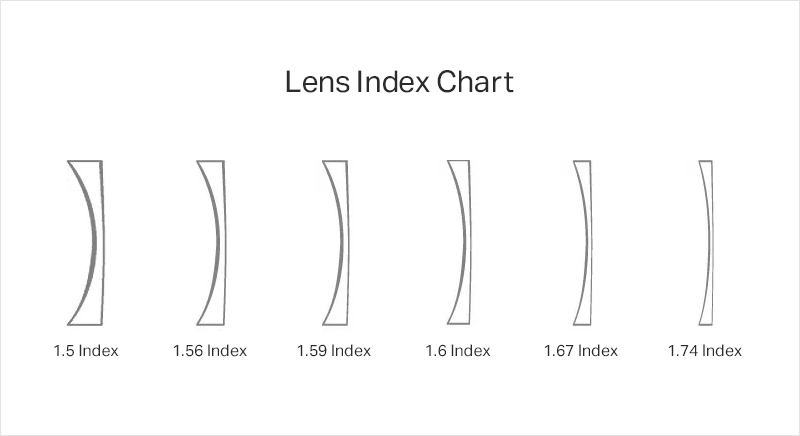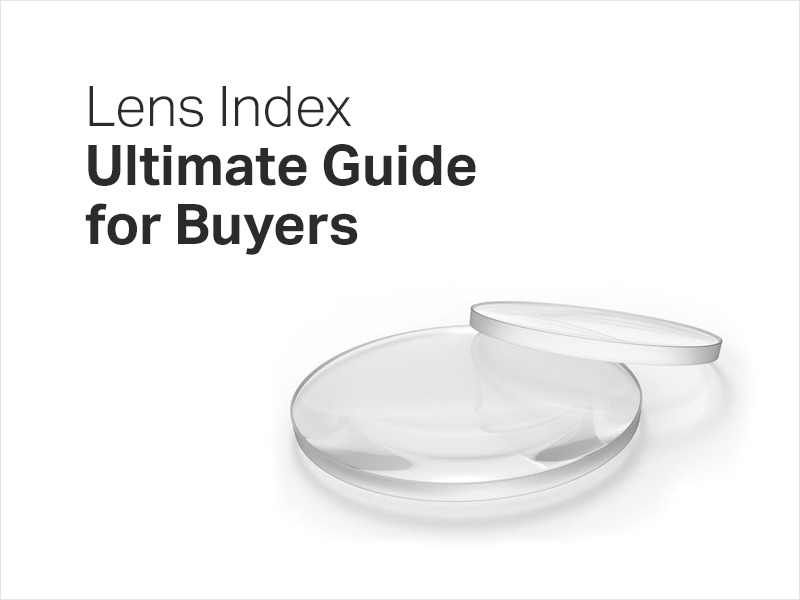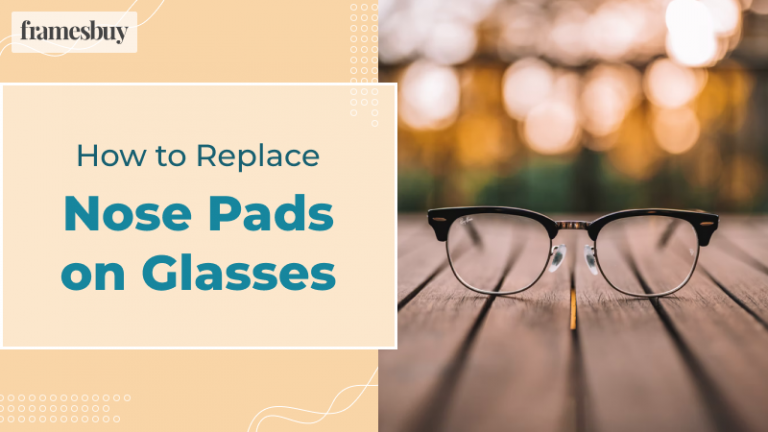More often while purchasing eyeglasses, people pay attention to the frames for the look and comfort purpose but what about the supporting lenses? High-performing lenses ensure with enhanced comfort and vision. While looking for lenses, you will come across the term lens index which is also known as the refractive index or index of refraction.
What is Lens Index?
It is the number that defines the thickness or thinness of the lens. The index number is also the measurement which defines how effectively the material bends the light. The higher the index, the thinner will be the lenses. Higher the prescription, thicker will be the lens, so high-index lenses are probably the best choice for stronger prescription as they are thin, light and comfortable.
Generally, the index number ranges from 1.50 to 1.74 where 1.74 index is considered to be the thinnest lens.
Clear Understanding of Different Glasses Lenses Index
All inclusive frames are generally made up of standard or regular lenses of plastic material. They are known as CR 39 and have index 1.5. Standard lenses are thicker than the high-index lenses but are much affordable. If you have low prescription, standard lenses are preferable but in case of strong prescription, high-index lenses are recommended. These lenses offer great comfort, make overall appearance good and most importantly the light-bending ability provides better vision. Each lens is made of different materials.
Here are the glasses lens indexes that you should know:
1.5 Index single vision lenses – Standard/Regular Lenses
It’s the thickest lens that is recommended for prescription with SPH -2.5, +2.5 and below. To prevent cracking of the lenses, go for full-rimmed frames. The CR 39 lenses are conventional plastic lenses.
1.56 Index – Mid Index Thin and Light Lenses
Convenient lenses for stronger prescription, they are 15% thinner than 1.5 index. They work for prescriptions with SPH +4.00, -4.00. 1.56 index is a blend of superior optics, thin and light design.
1.59 Index – Polycarbonate Lenses
Polycarbonate lenses were initially used for safety glasses and now this material is actively used in making kids glasses, sports glasses and for almost every prescription. 1.59 index offers optical clarity and also 100% UV protection. It can be fitted in rimless glasses.
1.6 High-Index – Super-Thin Lenses
From this number starts the high-index lenses. It’s super, almost 20% thinner than 1.5 index. It’s ideal for stronger prescriptions with SPH that range around +3.00, -3.00 to +6.00, -6.00 and above. The lenses have thinner edges with overall reduced weight. Full rim or semi rim frames are recommended.
1.67 High-Index – Ultra-Thin Lenses
These ultra thin lenses are 20% thinner than polycarbonate lenses and 30% thinner than the regular lenses. Higher prescriptions with SPH correction +6.25, -6.25 to +8.00, -8.00 and for CYL correction +3.25, -3.25 and +4.00, -4.00, 1.67 index lenses are highly recommended. The reduced weight and thickness make it an ideal choice.
1.74 High-Index – Thinnest and Lightest Lenses
You will almost feel it’s invisible, the lenses are that thin. The stylish, lightweight high-index lenses with cosmetic benefit are suitable for strong prescription with SPH +8.25, -8.25 to +10.50, -10.50. It is aspheric in design and reduces magnification of the eyes.
1.80 High-Index – Glass Lenses
It’s for the strongest prescription and only suitable for full rimmed glasses. Since plastic is recommended only till 1.74, 1.80 high index glasses are available in glass material. It’s incredibly thin which offers superior aesthetic appeal. High-index glasses have the problem of glare, so it is recommended to add anti-reflective coating for enhanced clarity.
1.90 High-Index – Thinnest Lenses Possible
It’s the thinnest high-index lens possible for the strongest prescription. It is made up of special glass material which makes the overall eyeglasses absolutely ultra-thin and ultra-light. These high-index lenses look and feel comfortable. Even they are glass lenses so they are clearly scratch resistant.
1.80 and 1.90 lens index are not easily available. However you can easily get lens index range from 1.5 to 1.74.

Lens Thickness Also Depends On
It is wise to choose the lens index according to your prescription and maintain the aesthetic appeal. However, the thickness of the lens is also determined by the frames size – that is frame length and breadth, frame material and Pupillary Distance (PD). If the frame does not match your PD then it will be not as thin as you expect.
High-Index Lens Coating
High-index lenses come with different coatings for lenses and vision protection. The coatings include
- Blue light protection
- UV protection
- Anti-scratch
- Anti-reflective
High-Index Lenses Are Ideal For
People with nearsightedness, farsightedness and astigmatism might be benefited with high-index lenses. In fact, these lenses can be suitable for any prescription (particularly strong prescription) due to its enhanced performance, cosmetic appeal and clarity.
Did you find this post helpful? Then go ahead and share it.






